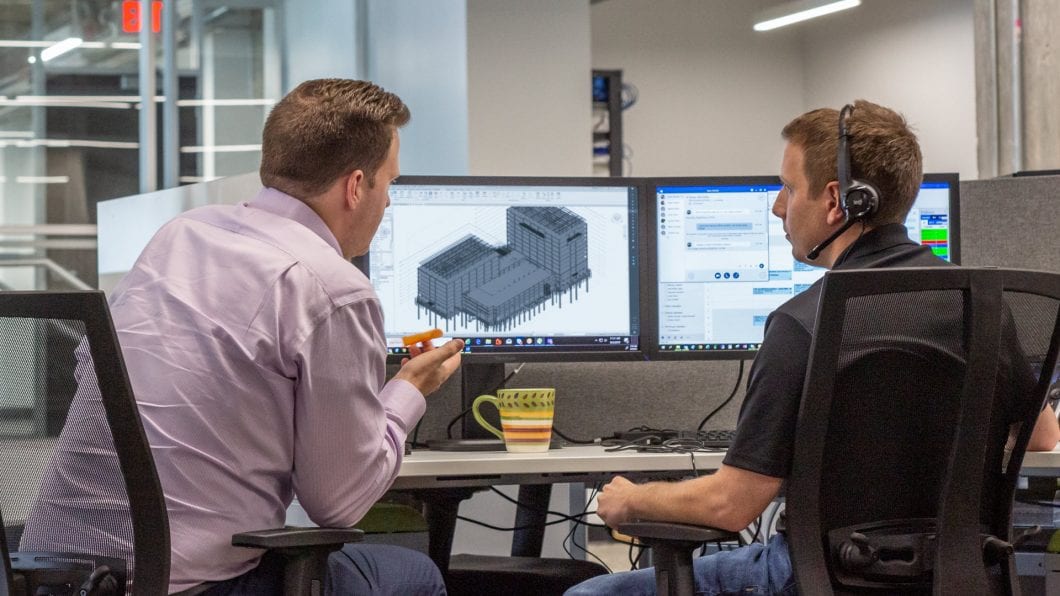Unlock Construction Success with These Preconstruction Strategies
Despite the fact that the build phase usually gets the most attention from construction organizations, a project’s success is often determined before ground is ever broken. For instance, preconstruction is where construction organizations can best identify opportunities to increase margins. Consider the facts: In theJournal of Construction Engineering and Management, researchers found that sheet metal contractors who followed an intentional and detailed preconstruction process gained an average profit margin of 23%, while projects that were poorly planned experienced an average profit margin of -3%.
A smooth-sailing construction project hinges on a thoughtful plan and clear, concise communication from the very beginning. By getting project partners involved early on during the planning phase and developing a strong foundation during preconstruction, all parties can better avoid catastrophe down the road. The time and energy invested in devising an in-depth and strategic preconstruction framework will unlock the rewards of increasing the overall efficiency of your project andhelping crews avoid delaysduring the build phase.
Let’s put all of this talk about preconstruction planning into action. Here, we’ve identified five steps to help you optimize your preconstruction process and set your future projects up for success.
1. Audit your current preconstruction process
First, it’s worth doing some soul searching to audit your current preconstruction process and identify areas of weakness. Maybe you already have a clear process in place, but not everyone is using it effectively. Or perhaps your organization doesn’t have a set preconstruction process, and you need to start from scratch.
Either way, it’s essential to get a complete view of your preconstruction process as it exists today so you can determine how to best optimize it for the future. When auditing your current process, ask yourself the following questions:
- Does my preconstruction team work in silos, both internally and across departments?
- Is our project information stored in different systems? Can other teams easily access it?
- Do we waste time on manual work and data entry?
- How often do we miss deadlines?
- What recent mistakes could have been avoided with better planning?
Talk to your team and conduct retrospectives of recent projects: where could things have gone better? Most importantly, be honest about where your process could use some improvement, then identify actionable strategies to address those issues.
2. Find the right collaboration tool
One of the best ways to set a construction project up for success is to get all project stakeholders on the same page from the get-go. For general contractors, this means choosing the right digital platforms for estimating, bid management, andqualifying vendors. For subcontractors, this meansmoving to a cloud-based bid boardwhere your entire team and office can track bids throughout the entire preconstruction process.
Today, construction companies need systems that enable effective collaboration between departments and eliminate silos across offices. After all, successful collaboration strengthens relationships both internally and externally. It allows everyone to bring their expertise to the table, make the best possible business decisions, and avoid the most risk.
3. Create a single source of truth
During the preconstruction phase, information often remains siloed (trapped in binders, spreadsheets, whiteboards, or email), which means information sharing gets delayed—if it happens at all. This disconnect means project partners operate based on different versions of reality, using whatever data they happen to have access to—regardless of whether it’s incomplete, inaccurate, or both. It also primes teams for missing deadlines and making errors, decreasing overall productivity.
On the other hand, if you store all data in a single system, it increases efficiency and prevents vital information from slipping through the cracks. Even after the preconstruction phase is complete, using a cloud-based tool also allows organizations to embraceconnected construction. Thismakes preconstruction data portable, creating a seamless flow of construction information between project phases.
4. Remove all manual processes
分段装配软件被设计为支持te江南足球直播在线观看ams and increase efficiency by automating tedious, manual processes. While some construction professionals hear the word “automation” and worry about the potential for job redundancy, highly effective construction organizations know that automation doesn’t replace human beings; it’s simply a tool that helps increase efficiency and minimize mistakes.
Even better, automating tedious, manual tasks allows preconstructionteamsto take on more work and spend more time thinking strategically, not being bogged down in data entry.
5. Build trust and strengthen relationships
Whether you’re an owner, general contractor, or subcontractor, preconstruction is the best time to cultivate positive working relationships that are rooted in trust and communication. It’s the perfect moment for all project partners to align and support one another.
Effective communication begins with reaching the right contacts at the right time and continues with communicating in real-time about the twists and turns that inevitably take place throughout the lifecycle of a project. Trust is not only a natural reward ofsolid communication—it’s fortified when you pay special attention to the relationships that matter most.
The ultimate payoff for a great preconstruction process? Smiling clients that come back, again and again.
Connecting the Dots for Preconstruction Success
Optimizing the preconstruction process is an opportunity to identify major risks and concerns before building begins, ultimately improving quality and increasing profits. Nonetheless, to remove all disconnect between planning and execution, you need the right tools. Utilizing connected construction technology, likeAutodesk Construction Cloud™, empowers preconstruction teams to evaluate design intent, develop predictable project plans, and identify the best builders and vendors to complete projects. If you’re ready to connect all data and workflows—from design to build—and make more effective decisions across the project lifecycle, learn morehere.







0 Comments